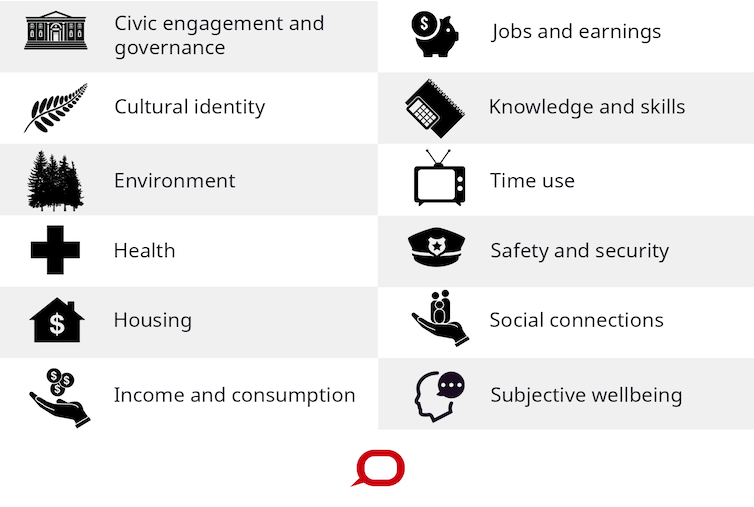There is
Last week’s well-being budget
Our research uses the Genuine Progress Indicator (GPI). It shows that by that measure, New Zealand may be only half as well off, compared to conventional measures such as GDP.
Accounting for costs and benefits of economic activity
Globally, the GPI is the most widely used method to replace GDP. It is essentially a macro-scale analysis of the costs and benefits of activities associated with economic activity. It includes personal consumption of goods and services as one of the largest benefits, but it balances this with costs, which may include social factors such as income inequality and environmental factors such as water pollution and the emission of greenhouse gases.
We show that overall, on a per capita basis, New Zealand’s GDP has increased by 91% since 1970. But the GPI gives a more accurate measure of the nation’s well-being, an increase of only 53%.
Personal consumption is the highest value in both GPI and the GDP during the 1990s. It grew strongly with an improving economy, but there is a widening gap between GDP and GPI because of the increasing cost of environmental problems and other externalities, such as the high cost of increasing commuting time.

READ MORE: It’s time to vote for happiness and well-being, not
Sustainability as the beacon
The struggle to find something better than GDP has a long history in New Zealand.
In 2008, towards the end of the Labour government term, Stats NZ developed a conceptual framework for measuring progress towards a “sustainable development approach”. This substantive work did not come up with a replacement for GDP, but
With the National Party coming to power in 2009, sustainability literally became a banned concept. All the work on sustainability

Living standards research
From 2011, Treasury began developing the Livings Standards Framework (LSF) as an alternative to GDP. Many took notice as Treasury, one of the last true believers in GDP, was questioning its usefulness as the indicator of national progress.

CC BY-SA
The theoretical underpinnings of this framework are diverse, drawing on concepts of sustainability
Unfortunately, when you drill down into the detail of these indicators, you realise that,
The living standards indicators also provide no guidance on whether the country is worse off or better off in an overall sense. The data
READ MORE: New Zealand’s well-being approach to budget is not new, but could shift major issue
Progress indicators for the regions
From 2007 onwards, there were
The struggle to find a replacement for GDP has not led to any firm conclusions, and one can’t ignore the role of politics at both a government and inter-departmental level.
Governments of various persuasions have attempted to impose their own view of what a GDP replacement would look like. Until this situation stabilises, and there is an enduring and robust replacement ![]()
Murray Graham Patterson, Professor in Ecological Economics, Massey University
This article is republished from The Conversation under a Creative Commons license. Read the original article.






